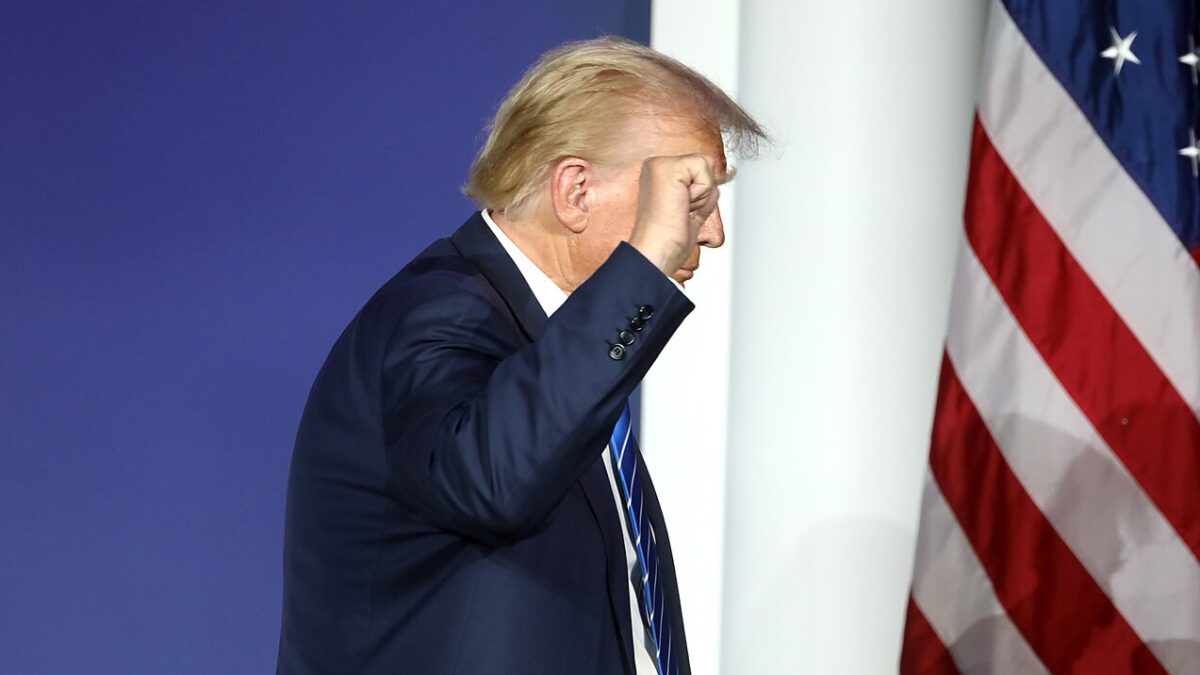
American higher education is discombobulated. College graduates fret about mounting student loan debt. Parents worry about their ability to pay ever-escalating costs. And the president of the United States aggravates these worries by bloviating about free community college, as if increasing federal involvement in education should comfort the public. No wonder those of us who lead colleges scoff at his plan to implement a federal “grading system” of our institutions.
Not all of this controversy is limited to finances, however. Federal officials have used the government’s bully pulpit and bloated purse to foist upon colleges a questionable, expanded interpretation of Title IX, the federal law governing gender equity in college programs. With “federal compliance officers” now trolling campuses, colleges have ceded the formation of their students to bureaucrats with dubious agendas.
The worst is yet to come. This intensifying problem with Title IX enforcement provides a glimpse of the future. Although the government has not yet tied the proverbial strings between Title IX compliance to federal student loan and grant programs—governed by Title IV—the writing is on the wall.
For that reason, at Wyoming Catholic College (WCC), we have chosen to forgo federal student loan and grant programs. As a relatively new college, we only recently earned the requisite accreditation status to be eligible for those Title IV funds. Although participating is enticing, the twin problems in higher education—the government’s social-engineering agenda and its creation of an artificial market of student loans—convinced us otherwise.
Like a handful of other colleges, most notably Hillsdale College (Michigan) and Grove City College (Pennsylvania), we’ve taken a cue from William Buckley: looking at the landscape of American higher education, we’ve elected to “stand athwart history, yelling ‘Stop!’”
By providing a closer look at the factors of our decision, I hope more Americans can understand the structural problems in American higher education. So doing will also answer a question that many have asked: Why has a small liberal arts college in the least-populated state in the Union captured such attention?
The Allure of Federal Funds
The short answer to that question is that our college has every reason to accept federal funds, at least from a financial standpoint, yet those benefits are offset by government overreach. Knowing a little about WCC underscores the significance of our decision, as accepting federal funds would certainly have benefited our institution.
One of the newest colleges in the country, Wyoming Catholic was founded in 2005. Our liberal-arts program requires all students to take the same track of courses, all of which rest on the Great Books. The result is an educational community that knows and loves tradition: even outside class, students, faculty, and staff commonly gather to engage in the “Great Conversation,” discussing how they, as modern stewards of tradition, can sustain culture.
You might even say we’re inspired by Alexis de Tocqueville’s observation from the 1820s: “a few excellent universities would be worth more than a multitude of bad colleges where superfluous studies that are done badly prevent necessary studies from being done well.”
As an institution committed to teaching Truth—not some postmodern poppycock about each individual’s reality—you might say we’re predisposed against any institution that propagates untruth. Perhaps that’s what The New York Times meant by calling us “cowboy Catholics.”
Cowboy or not, the trail leading to federal money would have been a golden one for Wyoming Catholic. By eschewing the modern, conveyor-belt, mass-market education system for a highly personalized, seminar-style teaching approach, our expenses are considerable, especially for a small college. Although this model is ideal for our students, it leaves little wiggle room financially. For that reason, in previous discussions on the topic, the college’s board of directors assumed that the school would accept federal funds.
Even for our conservatively minded board, administration, and faculty, this was sensible. Like most colleges, Wyoming Catholic depends heavily on philanthropy; tuition revenue simply does not cover the costs, even of a frugal operation. Considering that participation in Title IV programs would have netted the college approximately $700,000 in the upcoming school year—that’s about 15 percent of our annual budget—deciding to forgo participation in these programs was no mere academic exercise.
Moreover, because the college plans to grow from 120 to approximately 400 students, having federal student loans and grants would be ideal during the recruitment process. With the total annual cost of attendance, including room and board, at $28,000 per year, any financial aid at the college’s disposal is helpful.
The Current Federal Funding Model Is Not Sustainable
In addition to our concerns about federal funding undermining our commitment to Catholic Church teaching, we have significant doubts about the sustainability of the government-controlled student-loan market, commonly referred to as a “bubble” by close observers. As economist Steven Cruz observed:
Since the phased reduction in student loan rates began in 2008, national student loan debt has increased despite lower rates. Today, student loan debt comprises nearly 36 percent of total non-housing debt, increasing nearly 241% since 2004 to a whopping $990 billion in 2013. A system that links student loan rates to market rates would give students an accurate portrait of the cost of education, helping them make a more informed decision on whether and how much to invest in their education.
Contrast the reality nationally with the example of Wyoming Catholic College. From a student perspective, the college’s internally funded loans and need-based grants are competitive with the government’s. Furthermore, the college caps the total amount of student indebtedness over four years at $19,000; almost all our students owe even less than that, with our average student indebtedness at $15,500— far less than the national average of $28,400.
WCC’s stance on limiting student indebtedness enhances the value of the education we offer. That fact is underscored by our four-year graduation rate of 86 percent, nearly triple the national average. Even without federal funds, WCC students have access to one of the best values in higher education today.
In fact, it is the institution—not our students—which bears the brunt of forgoing federal money each year. By abstaining from Title IV programs, the college does not receive all of its tuition revenue in a given year, instead waiting for its graduates to repay loans. Thankfully, our student-loan default is one of the lowest in the country—barely one-tenth of the national average of 10 percent. Nonetheless, we have had to ramp up our fundraising efforts to offset the $700,000 we would have otherwise received from the U.S. Department of Education.
Those efforts seem worthwhile, considering the costs of doing business with the government.
The Danger of Federal Funds
Doing business with the federal government is increasingly risky. The financial benefits are clear—just ask any of the private businesses that were awarded any of the $460 billion in government contracts last year. But those financial benefits rest on a house of cards: as a percentage of gross domestic product, our national debt is the highest it’s been since the post-World War II recession.
Moreover, the federal government has increased the “strings” attached to that money. President Obama’s Executive Order 13672, issued July 21, 2014, requires federal contractors to pledge nondiscrimination based on the categories of “sexual orientation” and “gender identity.” With the government’s creation of these special classes of people, business owners who hold differing beliefs have had to pursue business elsewhere.
This attitude has begun to seep into the nonprofit world, where our tax-exempt status is crucial, especially considering the philanthropic income we must solicit each year. For example, consider the rare moment of transparency by a government official regarding the current administration’s agenda. Last month, in oral arguments at the U.S. Supreme Court for the Obergefell v. Hodges case on same-sex marriage, Solicitor General Donald Verrilli revealed the game-plan: religious institutions need to comply with government group-think, or lose their tax-exempt status. What’s worse is that any institution that opposes same-sex marriage is seen as being equivalent to racists, for if same-sex marriage is a civil right, then anyone opposing that civil right is a Bible-thumping, knuckle-dragging troglodyte.
The Future of Higher Education
This dilemma is profoundly apparent in higher education, where two strands of the problem are now interwoven. One strand is the financial issue of the artificial market; the other strand is the advocacy, by the government itself, of a social-engineering agenda.
Given the stakes for the American republic, we at Wyoming Catholic College want our decision to cause others to examine the structural problems in American higher education, namely the student finance component, the role of the government, and the advocacy of the agenda.
Whether President Obama solicits our input in his “national conversation” on higher education, we will speak up, on behalf of all college students, people of faith, and those who think the federal government has become too powerful and too inefficient with our tax money. In short, Ronald Reagan’s exhortation in 1981 definitely applies to higher education: “Government is not the solution; it is the problem.”









